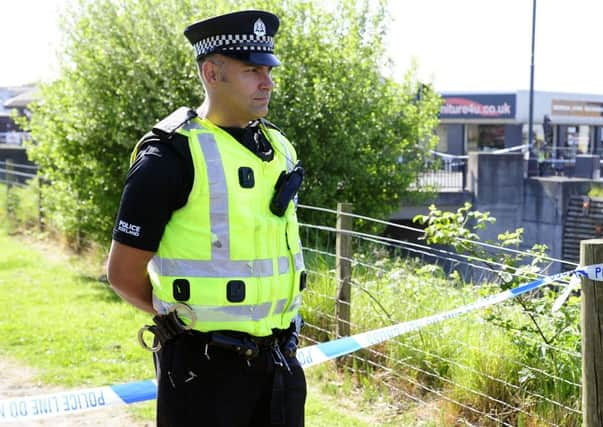Why are homicides in Scotland at a record low?


Researchers are now working to explain the factors behind the decrease and whether it is spread across all types of homicide, which is classed as either murder or culpable homicide.
A majority of killings in each of the past 10 years has been carried out with a sharp instrument, with more than three-quarters of the perpetrators being male, a report by the Scottish Government found.
Advertisement
Hide AdAdvertisement
Hide AdBetween 2014-15 and 2015-16 the number of homicide cases recorded by Police Scotland decreased by 8 per cent from 62 to 57.
This is the lowest figure for a 12 month period since 1976.
In Glasgow, homicides have fallen by 56 per cent since 2005-6.
The decrease in homicide is mirrored across other western countries, although the timing and shape of the downward trend varies and not all countries have seen such a steep fall as Scotland.
Sara Skott, a PhD researcher at the Centre for Law and Society at the University of Edinburgh, said: “Even though homicide overall is decreasing in Scotland, this decrease might not be equal across all types; some types of homicides might not be decreasing as fast - or even at all.
“If we want to prevent all homicides effectively, and not just some of them, it is therefore crucial that more research about homicide trends are conducted in Scotland.”
The report found that in 2015-16, 65 persons were accused of homicide and 86 per cent (56) of them were male.
Of the 57 victims, 72 per cent (41) were also male.
Most victims were killed by an acquaintance.
Almost one in three perpetrators (31 per cent) were under the influence of alcohol or drugs at the time.
“Recent research has highlighted the diversity of homicide, and underlined the importance of examining the circumstances of homicide in greater detail,” Skott continued.
Advertisement
Hide AdAdvertisement
Hide Ad“A murder that takes place indoors between two partners is for instance quite different from a murder that occurs between two acquaintances outside a pub.
“These different types of homicide might in fact be related to different causes as well as different social structures, and it is therefore of great importance to better understand homicide in Scotland if it is to be further prevented.
“Yet, if we combine all homicides into one single measure we are essentially treating all types of murders as if they were the same.”
Skott added more research as required into why both perpetrators and victims of homicide in Scotland tended to be older than 20 years ago, and why the proportion of incidents in residential environments had increased.
Fewer homicides take place outdoors than two decades ago.
“To understand the scope of the problem, it is also important to compare trends in homicide to those of other violent crimes.
“Although homicide is the most serious violent crime, the annual numbers of both attempted murder and serious assault are much greater.
“While the homicide rate in 2014-15 was 1.1 per 100,000, the rate for attempted murder was almost five times higher, while the number of serious assaults reported during the same year was almost 50 times higher.
“It’s safe to say that homicide is not particularly common compared to other violent crimes in Scotland.”